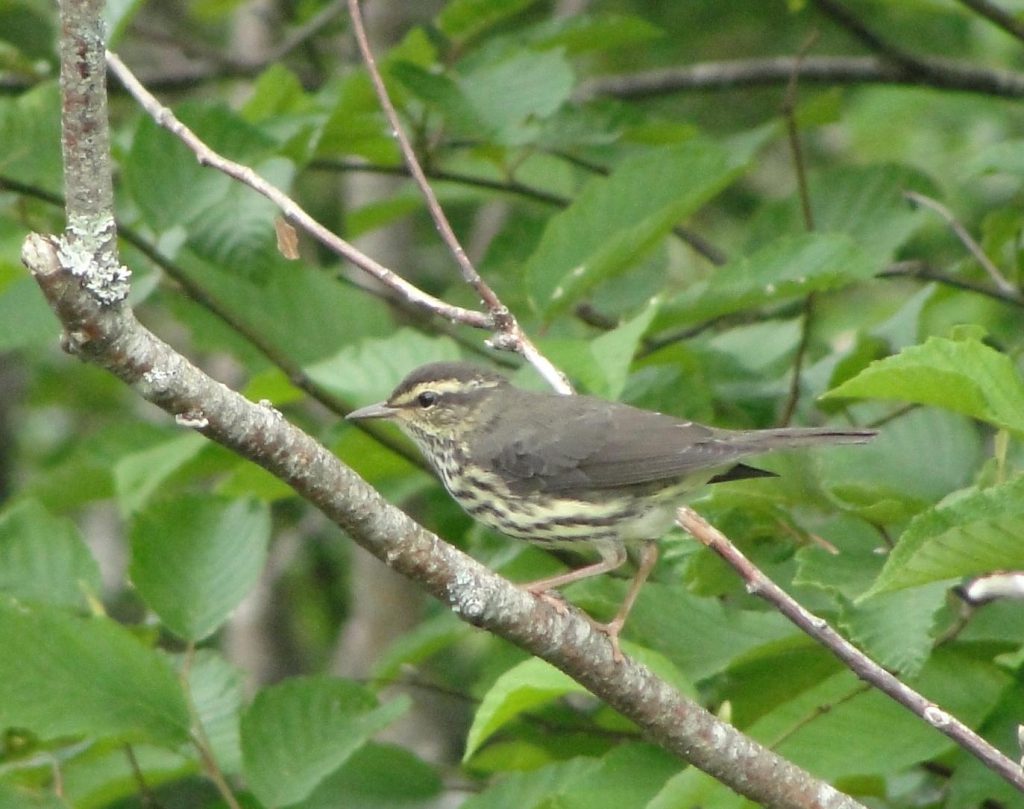As is often the case, discussion on the CTbirds listserv, starting with a post by Preston Lust, led me to take a look at the preliminary atlas species maps this morning. This time, the subject was waterthrushes.
Atlas data
Confirming hummingbirds
Recently I was asked if we’d written a blog post on hummingbirds and had to answer “no”. Ever since, I’ve been thinking about what there is to say on how to confirm breeding for the state’s smallest nesters, as it can be surprisingly difficult (though not as bad as for the closely-related chimney swift). Continue reading
July is the month
When we started the atlas, we told everyone that our goal was to have 20 hours of breeding season survey effort in each block. That time could all be spent by one person who “adopts” the block, or it could be from a mix of people. And, we asked that the time be spread evenly across the breeding season, including visits to all habitats, and with at least a little time listening for nocturnal species. Continue reading
Where are the woodpeckers?
Yesterday, I wrote about a way that birders can help with a student-led project designed to study the effects of forest fragmentation on woodpeckers and other bark feeding birds. Today, I thought I’d give an update on what the atlas data show us, so far, about the distributions of woodpecker species in the state. Continue reading
Counting (and confirming) crows
Almost daily, I notice some bird doing something and think “I should write a blog post about that”. And then my life (or my job) gets in the way and I don’t. Luckily, if you just wait long enough (as when atlasing), the solution comes along. Continue reading
Confirming orioles
The orioles in my yard are not posing as nicely as when they first returned; no longer coming into the feeder oranges now that there’s plenty of natural food for them eat. And, if it weren’t for their chattering calls and periodic songs, it would be much less obvious that they’re still around – just hidden among the leaves. But, they’re here, and now is a good time to confirm breeding. Continue reading
Confirming vireos
Yesterday, Greg Hanisek posted a message on the CTbirds listserve describing his discovery of a warbling vireo nest. His message included the tip that vireos frequently sing while on or near their nest (read the post here). Continue reading
Confirming catbirds
Our recent posts have focused on the goals of filling gaps and improving confirmation rates this year. Gray catbirds are one of the most widespread summer birds in Connecticut and have already been recorded in most blocks. Continue reading
Confirming robins
During the 1980s breeding atlas, American robins were confirmed as nesters in almost every atlas block. This fact, combined with the knowledge that robins show no signs of decline in Connecticut or in the east as a whole, has led us to treat the species as a rough barometer of how good our survey coverage is. Our assumption is that, where there are gaps in the robin map, there clearly needs to more survey work done – elsewhere might be lacking too, but not as severely. Continue reading
Confirming phoebes
Working as an ornithologist, one of the most common questions I get from the public is about the birds that build nests on people’s homes. When someone describes the nest they’ve found, they frequently say that they are placed on top of a light fixture, on a beam under a deck, or on some other similar structure. These nests usually turn out to belong to eastern phoebes. Continue reading
